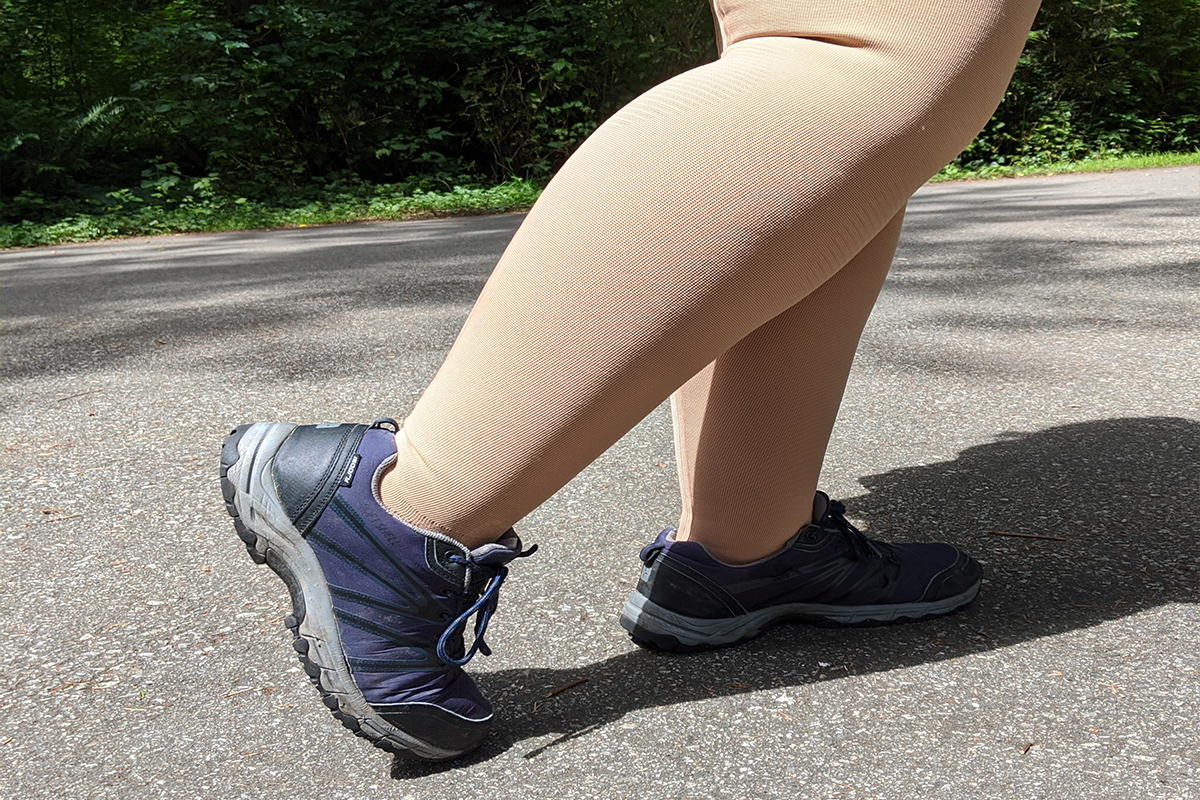The key to exercise for lymphedema is lots of movement while keeping a low to moderate heart rate. Movement through alternating muscle contractions and relaxation allows lymph flow to its maximum.
The pumping action of our muscles causes lymph to pump through its vessels. This is one reason why exercise is good for us. But which kind of exercises are best for the lymphatic system?

Walking
A great exercise for leg lymphedema is walking. Although, it is important to evaluate how long to walk as it is different for everybody. 30 minutes might benefit someone with leg lymphedema whereas 35 minutes might be too much for that same person and make their condition worse. Pay attention and create your own boundaries.
For those with arm lymphedema, walking while letting your arms swing by your sides is not beneficial because the centrifugal force and gravity will cause fluid to pool in the hands and forearms. However, walking with intentional arm movements or with poles would cause muscle contractions and relaxation in the arms to benefit the flow of lymph from the arms. Pendulum arm exercises that are often given for conditions like frozen shoulder should be avoided for arm lymphedema for the same reason that it causes fluid to pool, especially in the hands.
Yoga
Blood flow increases as our heart rate rises. This promotes more blood flow into the tissues and puts a higher demand on how much fluid the lymphatic system has to remove from these tissues. Beneficial exercises that have a low heart rate while maximizing movements are exercises like Tai Chi or certain types of yoga.
With yoga, choose classes that include a lot of movement, not static poses unless they are stretching. Holding a stretch for the affected limb can be beneficial. It allows for any adhesions in the tissues, especially scar tissue, to free-up and encourages better lymph flow. Holding a pose that is strengthening is not recommended for the affected limb. Strength training would be best addressed with movement, not static poses. Sustained muscle contractions will slow the lymph flow and build it up in an area that might not be able to recover quickly. For example, plank pose with arm lymphedema would cause a pressure build up in the area where we need it to flow the most. It might exacerbate or trigger an arm lymphedema. However, weightlifting with movement has been proven to benefit arm lymphedema.
Child’s pose is a great stretch for arm lymphedema but would not be recommended for those with leg lymphedema as it causes a pressure build up in the legs through the sustained bending of the knees and hip area.
Laughter yoga and breathing exercises during yoga will also have a beneficial effect on lymph flow. The diaphragm and alternating pressures in the abdomen affect flow on the large lymphatic duct running through the area.
Aerobic activities
Exercise in water is also beneficial for the lymphatic system as the water pressure exerts a force on the tissues. It is almost as if you are wearing a perfectly fitting compression garment! The simple act of walking in water will provide lymph flow. Avoid the hot tub or steam rooms though. These heat extremes will increase the demand on the lymphatic system very quickly.
For those who are exercising with a higher heart rate, active cool downs should be incorporated at the end. 15 to 20 minutes of active cool down doing an activity like Tai Chi, for example, would help flush the tissues of excess fluid produced by the vigorous activity.
Rebounding exercises affect the tissues to make the gel like substances in our tissues become more fluid. When the tissues are in a more fluid state, the lymphatic system is able to flush out fluid from the tissues. For best results, incorporate an active cool down component after the rebounding so the muscle contractions continue to move the fluid that has become available. Rebounding on its own may not provide enough flow through a deficient or sluggish lymphatic system, but the muscle pumping will assist it.
Contact us
If you have any questions when living with lymphedema, book an appointment with us. We can also help you find an experienced therapist who can assist you with your exercise regime. Or consult a physiotherapist or kinesiologist trained in lymphedema to provide guidance in the areas of exercise.
Denise Drisdelle is a registered massage therapist and co-founder of FLOW Lymphatic Health Services.